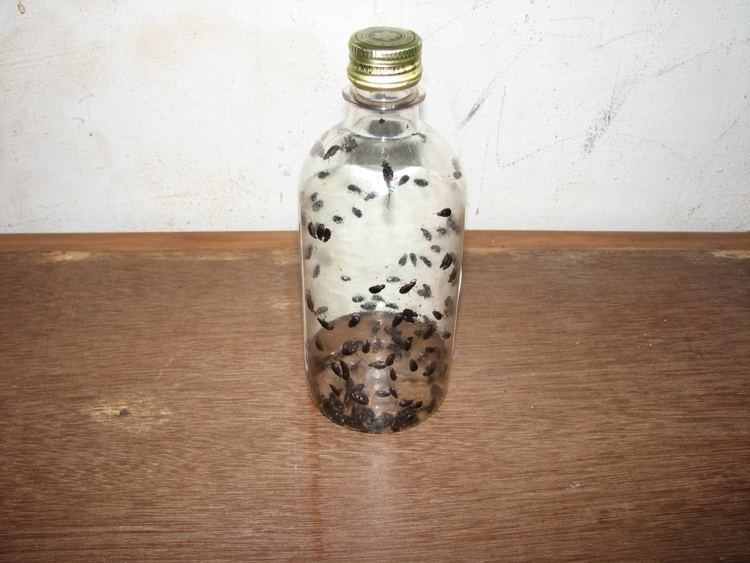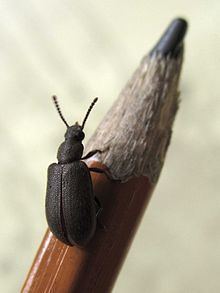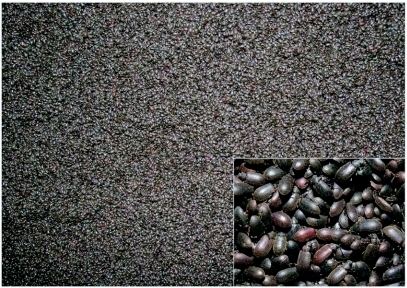Kingdom Animalia Family Tenebrionidae Phylum Arthropoda Order Beetle | Class Insecta Genus Luprops Rank Species | |
 | ||
Similar Beetle, Lagriinae, Gonocephalum, Lagria, Opatrini | ||
Ants and mupli beetle
The Mupli beetle, Luprops tristis, is a plant detritus eating Darkling beetle found in parts of India. The adult beetle is black and around 8 millimetres (0.31 in) long. While they are usually harmless to humans, when squeezed or picked up, they produce a defensive phenolic secretion that causes skin burns. Luprops beetles have a notorious reputation since they can make life difficult when large populations invade farm houses, as reported in some parts of southern India, especially the state of Kerala. The name "Mupli beetle" comes from the region in Kerala where the first major infestations of this beetle in Kerala were noted.
Contents

Mupli beetle luprops tristis
Description

L. tristis goes through five larval instar stages and a pupal stage before the adult stage. The adult beetle is colored black. There is very little sexual dimorphism, and males and females overlap in size. After a month of active feeding in the adult form, they go into a lengthy dormant period in a suitable undisturbed dark location in response to the first summer rains before emerging again to feed and reproduce.
Relationship to People

In the rubber plantations of tropical southern India, Mupli beetles are considered a major nuisance, to the point of infestations rendering some buildings uninhabitable. While these beetles do not deliberately attack people, they produce a defensive odoriferous phenolic secretion when provoked that causes skin blisters. This is most commonly triggered by accidentally squeezing a beetle. They invade homes and other buildings in very large numbers, estimates ranging up to 4.5 million individuals in a single building. They will then enter the dormant stage en masse, creating beehive-like masses under the roof.
